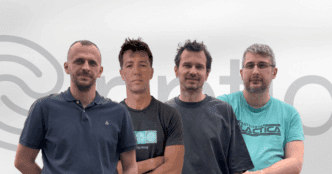Foundation EGI, a startup emerging from MIT’s innovation labs, just raised $7.6 million in an oversubscribed seed round to tackle one of engineering’s biggest pain points: inefficiency. The company has created what it claims is the world’s first domain-specific agentic AI platform designed specifically for engineers—bringing a long-overdue digital upgrade to how physical products get designed and built.
The funding round attracted top-tier backers including The E14 Fund, Union Lab Ventures, Samsung Ventures, GRIDS Capital, Stata Venture Partners, and Henry Ford III. With this capital, Foundation EGI plans to scale its engineering and product teams, run more enterprise pilots, and expand the capabilities of its platform. One key focus is deeper integration with widely used engineering software.
Fixing a Trillion-Dollar Problem
Unlike industries such as finance and healthcare that have embraced AI and automation, engineering and manufacturing still rely heavily on manual work. According to industry estimates, this results in nearly $8 trillion in lost productivity every year. Miscommunication, inconsistent documentation, and fragmented workflows slow down innovation and drive up costs.
Foundation EGI wants to change that. Its platform converts natural language inputs—like design requests—into structured, machine-readable code that engineering systems can actually execute. This approach boosts speed, accuracy, and consistency across the product lifecycle.
A Platform Built by Engineers, for Engineers
The startup was co-founded by Mok Oh, a former MIT researcher and serial entrepreneur, along with Professor Wojciech Matusik and engineer Michael Foshey. Their combined experience in AI, manufacturing, and design laid the groundwork for the company’s proprietary technology.
Their vision was inspired by a 2024 MIT research paper titled Large Language Models for Design and Manufacturing, co-authored by Matusik and Foshey. That work laid the scientific foundation for a new kind of AI: one that speaks the precise language of engineers and understands spatial constraints, physics, and real-world applications.
Foundation EGI’s platform is powered by a custom large language model fine-tuned on domain-specific engineering knowledge. This allows intelligent AI agents to operate seamlessly inside existing design software, automating repetitive tasks and interpreting complex instructions with precision.
Real-World Impact: Faster Cycles, Fewer Errors
Pilots are already underway with Fortune 500 industrial companies, and early results are promising. The platform has helped teams cut down design-to-production timelines, reduce costly errors, and move products to market faster.
Because the model understands the unique vocabulary and logic of engineering, it can outperform general-purpose AI tools that often misinterpret industry-specific terms or generate vague outputs.
“Generic LLMs fall short in engineering,” explained CEO Mok Oh. “They can’t handle the detail or domain-specific logic engineers need. EGI is purpose-built to change that—starting with documentation. We’re replacing inconsistent, error-prone processes with structured, reliable workflows that let teams move faster and make better decisions.”
Dennis Hodges, CIO of global automotive supplier Inteva Products, shared his optimism: “EGI has the potential to cut out waste and automate our most chaotic processes. It brings transparency and control to engineering in a way we haven’t seen before.”
A New AI Category Is Being Born
What Foundation EGI is building goes beyond a product—it’s creating an entirely new category. Agentic AI for engineers could be the missing link between creative design thinking and machine-level execution.
At a TEDx MIT event, co-founder Professor Matusik described the platform’s deeper potential: “This is about more than automation. We’re using spatial awareness, real-world physics, and atoms—not just code—to unlock a new kind of engineering creativity. The possibilities are enormous.”
Backers like Habib Haddad, managing partner of the E14 Fund, see this moment as a turning point. “There’s a massive opportunity here. Engineering has needed this kind of breakthrough for decades. And the timing couldn’t be better—with industrial demand rising, and AI ready to deliver real ROI.”
As Foundation EGI gears up for broader adoption, one thing is clear: the era of agentic AI in engineering has arrived—and it might just change how the world builds everything.













